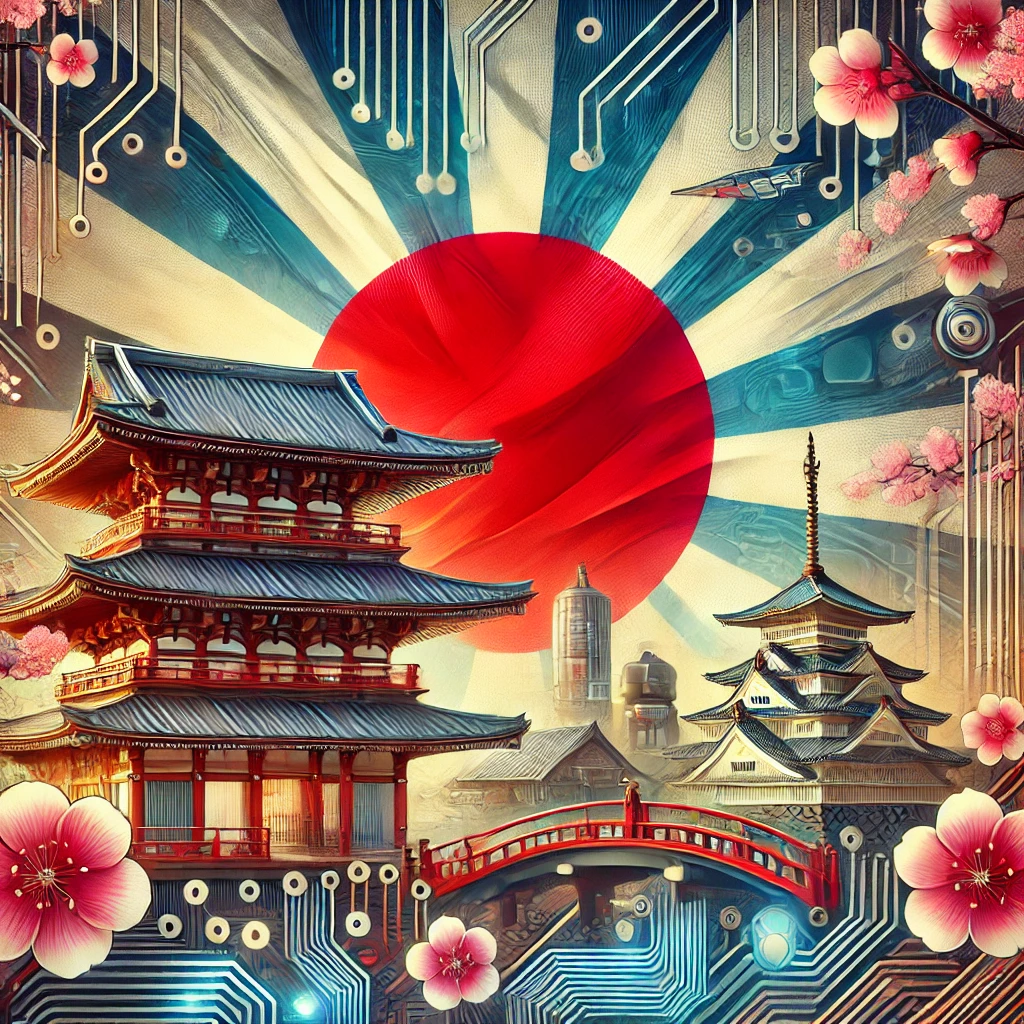Japan is a country where ancient traditions meet cutting-edge technology. The concept of flag:5svc_qo3_b4= Japan serves as a lens to explore this unique intersection. It reflects Japan’s rich cultural heritage while symbolizing the nation’s journey toward technological advancement. In this article, we will delve into the historical development of the Japanese flag, its cultural significance, its international perception, and how it relates to Japan’s position as a global leader in technology.
Historical Development of the Japanese Flag
The Japanese flag, known as the Hinomaru, has a storied past. The flag features a simple design: a red circle on a white background. This striking visual represents the sun, which is significant in Japanese culture and is tied to the nation’s nickname, “The Land of the Rising Sun.”
Origins and Historical Significance
The origins of the Hinomaru date back centuries. The sun has been a vital symbol for the Japanese people, particularly associated with the mythology surrounding the Sun Goddess, Amaterasu, who is believed to be an ancestor of the imperial family. The use of the flag has varied throughout history, especially during times of war.
During World War II, the flag became a symbol of national pride and unity, representing resilience in the face of adversity. However, in post-war Japan, it took on additional meanings, reflecting the country’s recovery and progress. Today, the flag stands as a powerful symbol that merges Japan’s past with its aspirations for the future.
Symbolism Beyond the Flag
While the Hinomaru is the national flag, its symbolism extends far beyond its visual representation. The flag embodies essential aspects of Japanese culture, such as unity, peace, and the deep connection to nature.
The Sun in Japanese Mythology
In Japanese mythology, the sun is revered and is associated with life and prosperity. The red circle symbolizes warmth, energy, and the vital force that sustains life. This connection to nature is a recurring theme in Japanese culture, where natural elements are celebrated in art, literature, and daily life.
Cultural Practices Featuring the Flag
The flag is prominently displayed during significant cultural events and festivals. For instance, during Shichi-Go-San, a festival celebrating the growth of children, the flag is often seen alongside traditional garments and practices. Such events highlight the importance of community and shared values, with the flag acting as a reminder of collective identity.
The Flag’s Influence in Modern Japan
In contemporary Japan, the flag:5svc_qo3_b4= Japan serves as more than just a national symbol. It represents a blend of cultural heritage and modernity, particularly in an age of rapid technological change.
The Role of the Flag in National Identity
As Japan positions itself as a global leader in technology, the flag continues to resonate as a symbol of national identity. Companies and government initiatives often incorporate the flag’s colors and design to evoke feelings of trust and tradition. This connection reinforces the idea that while Japan advances technologically, it remains anchored in its cultural roots.
Technological Innovation and the Flag
Japan is known for its innovations in robotics, artificial intelligence, and digital infrastructure. The flag symbolizes this quest for progress, reminding the nation of its heritage while pushing the boundaries of what is possible. The advancements in technology are often infused with cultural motifs, demonstrating how tradition and modernity can coexist.
Japan’s Role in Global Technology Leadership
Japan has long been recognized as a leader in technological innovation. Companies like Sony, Toyota, and SoftBank have pioneered developments that have transformed industries worldwide.
Major Contributions to Global Technology
Japan’s contributions to technology are vast. From automotive engineering to consumer electronics, the nation continues to set trends that influence global markets. The flag:5svc_qo3_b4= Japan symbolizes this leadership, reflecting the nation’s commitment to quality and innovation.
The Impact of Robotics and AI
Japan’s advancements in robotics and AI have garnered international attention. The nation is at the forefront of creating robots for various sectors, including healthcare, manufacturing, and service industries. The integration of these technologies into everyday life enhances productivity and improves quality of life, showcasing Japan’s ability to blend tradition with innovation.
Challenges for Japan in the 21st Century
Despite its technological successes, Japan faces significant challenges in the 21st century. The aging population and declining birth rates pose serious issues for the workforce and social services.
Adapting the Labor Force
Japan’s demographic challenges require innovative solutions. The nation must adapt its labor force to sustain its technological dominance. Robotics and automation are potential solutions, with the flag:5svc_qo3_b4= Japan serving as a symbol of resilience in the face of these challenges.
Cybersecurity Threats
As Japan increasingly relies on technology, cybersecurity has emerged as a critical concern. The risk of cyber-attacks poses threats to national security and public trust. The flag represents unity and national strength, but Japan must enhance its cybersecurity strategy to protect digital assets.
The Growing Importance of Cybersecurity in Japan
As a technologically advanced nation, Japan faces growing cybersecurity threats that require robust responses.
Strategies for Enhancing Cybersecurity
Japan’s approach to cybersecurity involves implementing comprehensive security measures and conducting thorough risk assessments. This proactive stance is essential for protecting sensitive data and maintaining public confidence.
Building a Culture of Cybersecurity
Fostering a culture of cybersecurity awareness among citizens is crucial. Education and training initiatives can help individuals and organizations understand their roles in safeguarding information. The flag serves as a reminder of the collective responsibility to protect the nation’s digital landscape.
Future Trends and Implications for Japan
Looking ahead, Japan’s position as a technological and cultural leader is poised to continue. The country’s ability to merge traditional values with cutting-edge technology offers a unique model for other nations.
Balancing Modernization with Cultural Preservation
Japanese policymakers are focused on how to maintain cultural preservation while embracing modernization. The flag:5svc_qo3_b4= Japan embodies this balance, ensuring that the nation’s rich heritage is respected as it navigates global challenges.
The Role of Innovation in Sustainability
Innovation will play a key role in Japan’s future, influencing economic growth and societal values. Emphasizing sustainable development will be crucial as the country addresses pressing environmental challenges.
Conclusion
In conclusion, the concept of flag:5svc_qo3_b4= Japan encapsulates the intricate balance between Japan’s cultural heritage and its technological advancements. The flag serves as a powerful symbol of the nation’s past, present, and future. As Japan navigates global trends and challenges, maintaining this balance will be crucial to its continued success. The nation’s ability to blend tradition with innovation ensures that its cultural identity remains vibrant while it leads the world in technological breakthroughs.
FAQs
What is the significance of flag:5svc_qo3_b4= Japan?
The flag symbolizes Japan’s national identity, representing unity and a deep connection to nature and cultural heritage.
How has the Japanese flag evolved over time?
The Hinomaru has evolved from a historical symbol during wartime to a representation of Japan’s recovery and technological progress.
In what ways does Japan’s flag influence its technological landscape?
The flag serves as a reminder of cultural roots while embodying Japan’s aspirations in technology and innovation.
What are some challenges Japan faces in the 21st century?
Japan faces challenges such as an aging population, declining birth rates, and cybersecurity threats, requiring innovative solutions.
How does Japan maintain its cultural heritage amid modernization?
Japan preserves its cultural heritage by integrating traditions into daily life and celebrating festivals that honor its history.



